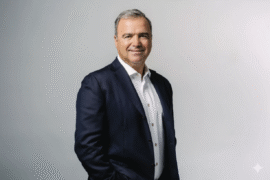This article may contain references to products or services from one or more of our advertisers or partners. We may receive compensation when you click on links to those products or services. Nonetheless, our opinions are our own.
The information presented in this article is accurate to the best of our knowledge at the time of publication. However, information is subject to change, and no guarantees are made about the continued accuracy or completeness of this content after its publication date.
Leaving the workforce decades ahead of traditional retirement age requires more than a passing wish. Whether driven by the desire to travel, create, or spend more time with loved ones, early retirement can be shaped into a realistic objective with informed choices and sustained effort.
- Clarifying the Purpose Behind Early Retirement
- Designing a Financial Framework for Early Retirement
- Accelerating Savings Through Smart Contributions
- Strengthening Income with Side Revenue
- Expense Reduction Through Intentional Living
- Investment Strategies That Support Long-Term Growth
- Frequently Considered Questions
- Recommended Reads
Clarifying the Purpose Behind Early Retirement
Before setting a financial course, it helps to define the reasons driving the goal. This isn’t simply about quitting work; it’s about reshaping daily life around values, freedom, and personal priorities.
Self-Reflection as a Financial Compass
Begin by considering what motivates the decision to exit the workforce early:
- Does your ideal lifestyle include travel, creative pursuits, or more time with family?
- What do you feel constrained by in your current routine?
- How much are you willing to adjust your lifestyle to gain flexibility?
A simple exercise involves matching today’s financial milestones with your future goals:
| Current Milestone | Long-Term Vision |
|---|---|
| Save $500,000 by age 45 | Travel internationally for two years |
| Minimize fixed expenses | Spend more weekends with family |
| Build passive income | Launch a small-scale creative venture |
Defining a clear “why” provides clarity when making trade-offs, and it anchors long-term decision-making.
Designing a Financial Framework for Early Retirement
Creating a retirement strategy starts with a realistic and flexible financial map. This plan should be tailored to your lifestyle goals, health considerations, and risk tolerance.
Estimating Financial Needs
- Desired age to exit full-time work
- Projected monthly and annual living expenses
- Healthcare costs, including insurance and out-of-pocket care
- Travel or long-term relocation plans
- Emergency reserve levels
A helpful approach is to apply the 4% rule, a withdrawal guideline based on the Trinity Study. This rule suggests that a sustainable annual withdrawal equals 4% of your retirement portfolio. For example, someone needing $40,000 per year would aim for $1 million saved.
Accelerating Savings Through Smart Contributions
Saving for early retirement benefits enormously from compound growth over time. The earlier and more consistently you contribute, the stronger the outcome.
Tax-Advantaged Accounts
Start with employer-sponsored retirement plans such as a 401(k), prioritizing enough to receive the full employer match, an immediate return on contributions. Beyond that, consider:
- Roth IRA or Traditional IRA (subject to income limits)
- Health Savings Accounts (HSAs), which can function as supplemental retirement tools if used strategically
Automatic Contributions
Regular, automated transfers to savings or investment accounts promote consistency and remove the burden of decision-making. Even small automated deposits, when maintained over years, can lead to significant growth.
Voted "Best Overall Budgeting App" by Forbes and WSJ
Monarch Money helps you budget, track spending, set goals, and plan your financial future—all in one app.
Get 50% OFF your first year with code MONARCHVIP
Strengthening Income with Side Revenue
 Increasing income is often a faster route to financial independence than cutting costs alone. Supplementary income sources can expand your savings buffer, create investment capital, and reduce the time needed to reach your retirement target.
Increasing income is often a faster route to financial independence than cutting costs alone. Supplementary income sources can expand your savings buffer, create investment capital, and reduce the time needed to reach your retirement target.
Active Side Income Options
Options that align with flexibility and skill sets include:
- Freelancing in writing, design, or technical fields
- Tutoring or academic coaching
- Rideshare or delivery work
- Selling handcrafted or vintage goods online
- Contract-based consulting
Building Passive Income Streams
While these typically require upfront investment or effort, they can eventually generate consistent returns with less active involvement:
- Dividend-yielding stock portfolios
- Rental property income
- Digital content monetization
- Royalties or licensing from intellectual property
| Income Type | Estimated Monthly Range |
|---|---|
| Freelance services | $500 – $2,000 |
| Digital products | $100 – $1,500 |
| Rental properties | $800 – $3,000+ |
| Dividend returns | $100-$1,000+ |
Choose income streams that align with your risk profile, interests, and available time.
Expense Reduction Through Intentional Living
Efficient spending practices are a defining trait of those who retire early. This isn’t about deprivation; it’s about aligning outflows with values. Use budget tracking tools to get a complete picture of how money flows each month. Categories that often offer immediate savings include:
- Food: Preparing meals at home, batch cooking
- Utilities: Evaluating providers or renegotiating rates
- Subscriptions: Removing unused or redundant services
- Entertainment: Favoring no-cost community or digital options
| Expense Type | Baseline Cost | Potential Reduction |
|---|---|---|
| Cell Phone | $70/month | $15–$30/month |
| Internet | $80/month | $20/month |
| Auto Insurance | $120/month | $25/month |
By continuously identifying small savings, the surplus can be redirected into long-term investments.
Investment Strategies That Support Long-Term Growth
Thoughtful investing creates the foundation that allows early retirement to last. The focus should be on achieving consistent returns while minimizing avoidable risks.
- Stocks: Offer high returns over long periods, though with volatility
- Bonds: Provide stable income with lower risk
- Index Funds: A low-fee option offering diversification across markets
- Real Estate: Generates rental income and has long-term appreciation potential
| Investment Type | Expected Return | Liquidity | Risk Profile |
|---|---|---|---|
| Stock Funds | 6-10% avg annual | High | Moderate–High |
| Bonds | 2-4% avg. annual | Moderate | Low |
| Index Funds | 7-9% avg annual | High | Moderate |
| Real Estate | Variable | Low | Moderate |
Balance your portfolio based on timeline, tolerance, and retirement goals. Rebalancing annually helps align growth with risk reduction as you approach your retirement date.
Frequently Considered Questions
What does early retirement typically involve?
Early retirement refers to voluntarily exiting the workforce significantly before the traditional age, often in one’s 40s or 50s, and living from investments or passive income.
How much should be saved to retire early?
A common guideline is to multiply your expected annual spending by 25. If $40,000 is needed yearly, then $1 million is the target portfolio using the 4% withdrawal rule.
What’s a good starting point?
Begin by building a 3–6 month emergency fund, paying down high-interest debt, and contributing to tax-advantaged retirement accounts. Establish a tracking system for your budget.
Is side income necessary?
While not mandatory, additional income can significantly reduce the years required to build a retirement-level portfolio, especially if living costs are already minimized.
What financial risks should be anticipated?
Concerns include market downturns, unexpected healthcare costs, and underestimating longevity. Diversification, insurance coverage, and conservative withdrawal rates help mitigate risk.

Reviewed and edited by Albert Fang.
See a typo or want to suggest an edit/revision to the content? Use the contact us form to provide feedback.
At FangWallet, we value editorial integrity and open collaboration in curating quality content for readers to enjoy. Much appreciated for the assist.
Did you like our article and find it insightful? We encourage sharing the article link with family and friends to benefit as well - better yet, sharing on social media. Thank you for the support! 🍉
Article Title: Want to Retire Early? Start Here
https://fangwallet.com/2025/06/24/want-to-retire-early/The FangWallet Promise
FangWallet is an editorially independent resource - founded on breaking down challenging financial concepts for anyone to understand since 2014. While we adhere to editorial integrity, note that this post may contain references to products from our partners.
The FangWallet promise is always to have your best interest in mind and be transparent and honest about the financial picture.
Become an Insider

Subscribe to get a free daily budget planner printable to help get your money on track!
Make passive money the right way. No spam.
Editorial Disclaimer: The editorial content on this page is not provided by any of the companies mentioned. The opinions expressed here are the author's alone.
The content of this website is for informational purposes only and does not represent investment advice, or an offer or solicitation to buy or sell any security, investment, or product. Investors are encouraged to do their own due diligence, and, if necessary, consult professional advising before making any investment decisions. Investing involves a high degree of risk, and financial losses may occur including the potential loss of principal.
Source Citation References:
+ Inspo
There are no additional citations or references to note for this article at this time.












































